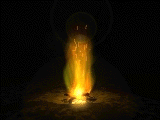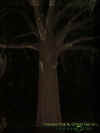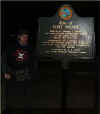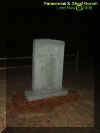| |



Fort Meade is technically the oldest
settlement in the county of Polk. You would think its not because the
county is known for its ghost towns which died off. It dates back to about
1849 and was formed during the Seminole Indian War more then likely the
third and final one. The fort was built as a strategic point and its
location was very centralized in Florida which was beneficial in defeating
the Seminole Indians. Further below you will read some history on the Fort
Meade area rather then me type it all out in depth you can read it if you
wish to learn more.
But basically Fort Meade had two forts in just
a short period. The first was was a series of wooden buildings near the
river with a military road called Tampa-Fort Pierce running through it. It
was established in 1849 and was used only for a year. It was not like most
forts we have visited their were no blockhouses, stone, wood
enclosures...it was just a bunch of structures made to provide shelter for
the soldiers.
The fort was named after Maj. Gen. George
Gordon Meade. He was responsible in history for finding the lost
site of Fort Clinch which is located near frostproof. He also commanded
Federal troops in the battle of Gettysburg during the civil war. Quite an
honorable man I am sure.
Then in 1851 a second Fort Meade was built
very close to the first one. It was commanded by Harvey Brown in 1852 to
1853. By 1854 the fort was abandoned then reoccupied in 1856-57 by the US
Army and the Florida Mounted Volunteers. Because of this fort it
provided shelter and safe haven for the local settlers. With that in mind
the fort expanded into a community.
When the civil war had approached the Fort was
burned by the Union Army. Its actually hard to believe the Union
Soldiers were able to travel in the humid florida swamps and still succeed
in such a task. The property of the fort was later owned and occupied by a
Cuthbert Rockner who sold half of the land which became public streets and
property of a confederate veteran named James M. Manley in 1871. Just 12
years later the land again was sold to a Lewis W. Hooker who had the fort
and barracks demolished in 1890.
Today all that is left of the fort is a small
park with a few monuments and plaques named Heritage Park. Its not very
old but its the site of the Second Fort and the old oak trees really do
give you an idea how old the area is. There seems to be alot of residual
energy here being that settlers lived here and some even died on this
parcel of land.
Its hard to believe that at one time a fort
stood here and now you have a playground where kids play without actually
being aware of the history here. But because of the fort today it is a
booming little town with alot of history to it.
©
By
Rick-AngelOfThyNight








Fort
Meade is the oldest settlement in Polk County, dating back to 1849 when a
settlement grew up around the U.S. Cavalry Fort during the Seminole Indian
Wars. The value of the location as a military base was recognized during
the Seminole Indian Wars and a fort was built as a strategic point.
The first military station, known as Fort Clinch, was established in 1849
and abandoned in 1854. In 1851-52, General Twigg took Lt. Meade and an
escort of horsemen to find the site of Old Fort Clinch. The General left
the search entirely to Lt. Meade and when just before dusk Meade announced
he had found the place, the General said, "Here shall be Fort
Meade".
Lieutenant George Gordon Meade served in the United States Army during the
Seminole War in Florida. He later returned to serve in the Army during the
Civil War and was a Union General. He commanded the Union Army at the
Battle of Gettysburg, Pennsylvania in 1863. A monument honoring Lt. Meade
is located at the fort site at Heritage Park on NE 3rd Street.
The first settler of whom any record can be found was Captain Lanier, who
settled in 1851.
As early as 1835, roads were being built to connect the forts. General
Winfield Scott opened a number of good roads leading to his many camping
stations. Tampa was connected by a good wagon road from Ft. Meade, Ft.
Capron and Ft. Myers. Then, in the Seminole War of 1855, the roads were
reopened and new ones built.
In 1856, the settlers in what is now Polk County had gathered in forts and
block houses for protection from the Indians, but an old Indian fighter,
Willoughby Tillis, had refused to come into the fort at Fort Meade,
preferring to take his chances on his place near town. On June 14, 1856,
the settler was attacked by a small band of Indians.
A monument stands on the block between South Church Street and South
Henry, just off East Broadway, to mark the place where this battle was
fought.
In 1881, Fort Meade was a sleepy village of perhaps 150 people, two dry
good stores, one fancy goods store and a drug store. The next year, the
first church building was built by the Methodists. The Baptists had a
church organization, but no building. An important industry of that day
was provided by the alligators, which were very numerous in the swamps and
waterways. One industry that appeared to be banned was the liquor
business. In 1898, there was no store selling liquor in Fort Meade. Nearly
every person owning land in or near the town had signed an agreement never
to sell or rent any person a house or land upon which to build who
intended to deal in liquor.
Many English settlers came to the Fort Meade area in 1888 and 1889. The
Englishmen were mostly younger sons of well-to-do families who could not
inherit any lands in England because of English laws of primo-geniture.
They had purses of money and took a great interest in sports, especially
racing. The liverymen of Fort Meade were successful in helping these young
scions of England spend their money by selling them racing ponies. Until
this time, about the only money in circulation was that obtained from the
sale of beef cattle, principally to Cuban markets.
School was held under a big oak tree before there was even a school
building. The teachers and several pupils met under the oak that is in the
yard of a home on NE Third Street. In 1885, a wooden building was built
for the school house. It was not sealed and in the severe cold of 1891,
the teacher and children had classes around wood fires to keep them warm.
This is the same school house that the Historical Society has restored
into a museum in the downtown area.
In 1883, the railroad station and tracks were located about two miles from
town. The citizens formed a corporation to build a street railway
connecting the town and the Railroad.
In 1887, E.E. Childers discovered phosphate in the highlands of Polk
County about two miles east of Fort Meade. Prospecting then was a great
deal different than it is today. In those days, the prospecting was done
by digging a hole until water was encountered. There was no shoring pipe
and an auger was used to bring up dirt and rock. To separate the phosphate
from the dirt, a layer of logs was put down and covered with the
"rock", alternating layers of wood and phosphate rock. A fire
was lighted in the wood and the phosphate rock was reclaimed from the
ashes.
The old military fort was demolished in 1890. The approximate site of the
old fort is set aside as a lovely park and playground for children on N.E.
Third Street.
The oldest church in Polk County is located in Fort Meade. Christ Church
Episcopal still conducts weekly services in the original building, on the
original site, and is recorded in the National Register of Historic Sites.
Fort Meade has been named to the National Register of Historic Places and
lists more than three hundred homes in our Historic District.
http://www.myflorida.com/ftmeade/history.html
|
|











